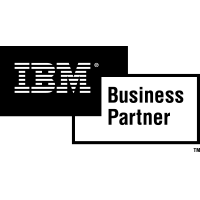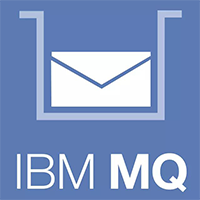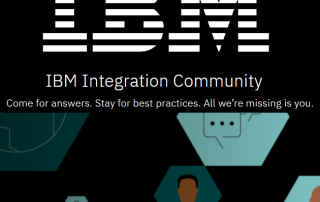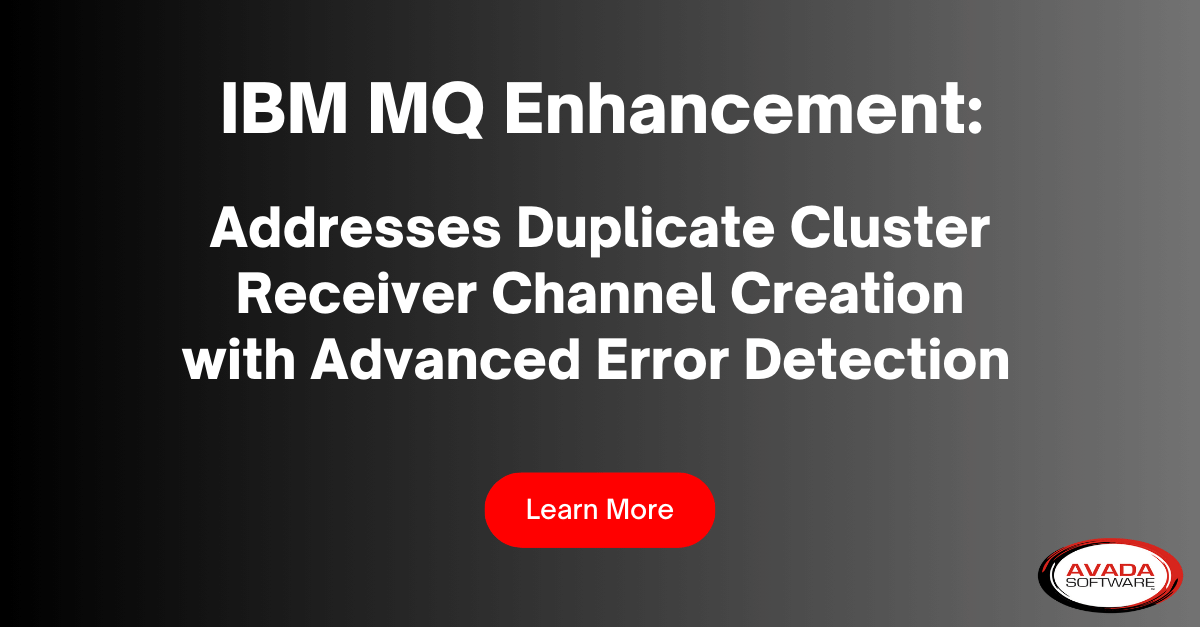Introduction to IBM MQ
IBM MQ, previously known as WebSphere MQ, is a robust message-oriented middleware product by IBM. Using a service-oriented architecture (SOA), it enables applications, systems, and services to communicate and exchange data reliably and securely, regardless of the platform they are running on. By using message queues, IBM MQ allows applications to communicate asynchronously, ensuring that messages are delivered even if the recipient is temporarily unavailable. A network of connected queue managers supports asynchronous routing of messages between systems, where message-producing and message-consuming applications are connected to queue managers.
Synchronous—A message consumer (an application) must call a receive method to explicitly fetch a message from a destination. Synchronous consumers execute code one after the other, it can only process one code at a time untill the code stack is empty.
Asynchronous — Async middleware is middleware that does not block the execution of the application while waiting for some external resource or operation, such as a database query, an API call, or a file read. In the case of IBM MQ messages are queued on the queues and managed on the queue managers.
Key Features of IBM MQ
- Asynchronous Communication: IBM MQ allows applications to send messages without waiting for a response, improving efficiency and decoupling components.
- Reliability: Guarantees delivery of messages through features like message persistence and recovery, ensuring that no message is lost
- Security: Provides robust security mechanisms including encryption, authentication, and authorization to protect data in transit.
- Scalability: Can handle a large volume of messages, scaling to meet the demands of enterprise-level applications.
- Cross-Platform Support: Compatible with various operating systems and programming languages, making it versatile for different IT environments.
Who Uses IBM MQ?
IBM MQ is used across various industries and sectors where reliable message delivery and integration are critical. Some of the primary users include:
- Financial Services: Banks and financial institutions use IBM MQ to ensure secure and reliable transactions between different systems.
- Healthcare: Hospitals and healthcare providers use it to exchange patient information and medical records securely.
- Retail: Retailers use IBM MQ to manage inventory, process orders, and handle customer data across different systems.
- Telecommunications: Telecom companies use it to manage communication between various network components and customer services.
- Government: Government agencies use IBM MQ to integrate different departments and ensure secure data exchange.
Who in the IT Department is Involved with Managing and Running IBM MQ
The management and operation of IBM MQ typically involve several roles within the IT department, each with specific responsibilities to ensure the smooth functioning and optimization of the middleware. Key roles include:
- Middleware Administrators
Middleware Administrators are responsible for the installation, configuration, and maintenance of IBM MQ. Their tasks include:
- Setting up and configuring MQ instances.
- Managing queues, topics, and channels.
- Implementing security measures.
- Monitoring the health and performance of MQ environments.
- Applying patches and upgrades to keep the system current.
- System Administrators
System Administrators ensure that the underlying hardware and operating systems supporting IBM MQ are running smoothly. Their responsibilities include:
- Managing servers and storage resources.
- Ensuring high availability and redundancy.
- Monitoring system performance and capacity.
- Performing regular backups and recovery operations.
- Handling hardware and OS-level troubleshooting.
- Network Administrators
Network Administrators manage the network infrastructure that IBM MQ relies on for message delivery. Their tasks include:
- Optimizing network configurations for low latency and high throughput.
- Ensuring network security and managing firewalls.
- Monitoring network performance and troubleshooting connectivity issues.
- Implementing redundancy and failover mechanisms for network paths.
- Application Developers
Application Developers design and develop the software that interacts with IBM MQ. They play a critical role in:
- Writing and optimizing code to send and receive messages.
- Implementing message transformation and routing logic.
- Ensuring that applications handle MQ-related errors and retries effectively.
- Collaborating with middleware administrators to optimize message flows.
- Database Administrators (DBAs)
Database Administrators may be involved when IBM MQ interacts with databases. Their responsibilities include:
- Ensuring database connectivity and performance.
- Managing transactions that span across MQ and database systems.
- Monitoring and optimizing database queries related to message processing.
- Handling data integration and transformation tasks.
- Security Specialists
Security Specialists focus on protecting the IBM MQ environment from unauthorized access and ensuring data integrity. Their tasks include:
- Implementing and managing authentication and authorization mechanisms.
- Setting up encryption for message data.
- Conducting security audits and vulnerability assessments.
- Ensuring compliance with industry standards and regulations.
- IT Operations and Support Teams
IT Operations and Support Teams provide ongoing support and manage day-to-day operations of the IBM MQ environment. Their responsibilities include:
- Monitoring system alerts and resolving incidents.
- Providing technical support to users and developers.
- Documenting procedures and maintaining operational runbooks.
- Conducting regular health checks and preventive maintenance.
- Collaboration Among Teams
Effective management of IBM MQ requires close collaboration among these roles. Middleware administrators, system administrators, and network administrators must work together to ensure that the infrastructure supporting IBM MQ is robust and reliable. Application developers need to communicate with middleware administrators to optimize message flows and ensure that applications are designed for optimal performance. Security specialists must coordinate with all teams to implement and maintain comprehensive security measures.
Regular meetings, clear communication channels, and shared documentation are essential to ensure that everyone involved is aligned and can respond quickly to any issues that arise. By fostering a collaborative environment, IT departments can effectively manage and optimize IBM MQ to meet the organization’s needs.
Optimizing the Performance of IBM MQ
To maximize the performance of IBM MQ, Administrators consider the following best practices:
- Hardware and Network Configuration
- Adequate Resources: Ensure that the underlying hardware has sufficient CPU, memory, and storage to handle the expected message load.
- Network Latency: Minimize network latency by optimizing the network infrastructure and using high-speed connections.
- Redundancy and Failover: Implement redundant hardware and network paths to ensure high availability and failover capabilities.
- Queue and Message Management
- Queue Depth Monitoring: Regularly monitor queue depths to prevent bottlenecks and ensure messages are processed promptly.
- Message Size Optimization: Keep message sizes as small as possible to reduce processing overhead and improve throughput.
- Persistent vs. Non-Persistent Messages: Use non-persistent messages where possible for higher performance, but ensure critical messages are persistent for reliability.
- Tuning IBM MQ Parameters
- Channel Configuration: Optimize channel parameters such as batch size and heartbeats to improve performance and reliability.
- Logging and Tracing: Enable detailed logging and tracing only when necessary, as they can impact performance.
- Thread Pooling: Configure appropriate thread pooling settings to handle concurrent message processing efficiently.
- Application Design Considerations
- Decoupling Components: Design applications to be loosely coupled, leveraging the asynchronous nature of IBM MQ to improve scalability and fault tolerance.
- Error Handling and Retries: Implement robust error handling and retry mechanisms to manage transient failures and ensure message delivery.
- Load Balancing: Distribute the message processing load evenly across multiple instances to avoid bottlenecks and optimize resource utilization.
- Monitoring and Maintenance
- Regular Monitoring: Use monitoring tools to keep track of IBM MQ performance metrics, identify potential issues, and take proactive measures.
- Performance Testing: Conduct regular performance testing and benchmarking to identify and address performance bottlenecks.
- Software Updates: Keep IBM MQ and its dependencies up to date with the latest patches and updates to benefit from performance improvements and security fixes.
Conclusion
IBM MQ is a powerful and reliable middleware solution that plays a crucial role in enabling communication and data exchange across various applications and systems. By following best practices for hardware configuration, queue management, parameter tuning, application design, and regular monitoring, organizations can optimize the performance of IBM MQ and ensure efficient, secure, and reliable message delivery.















